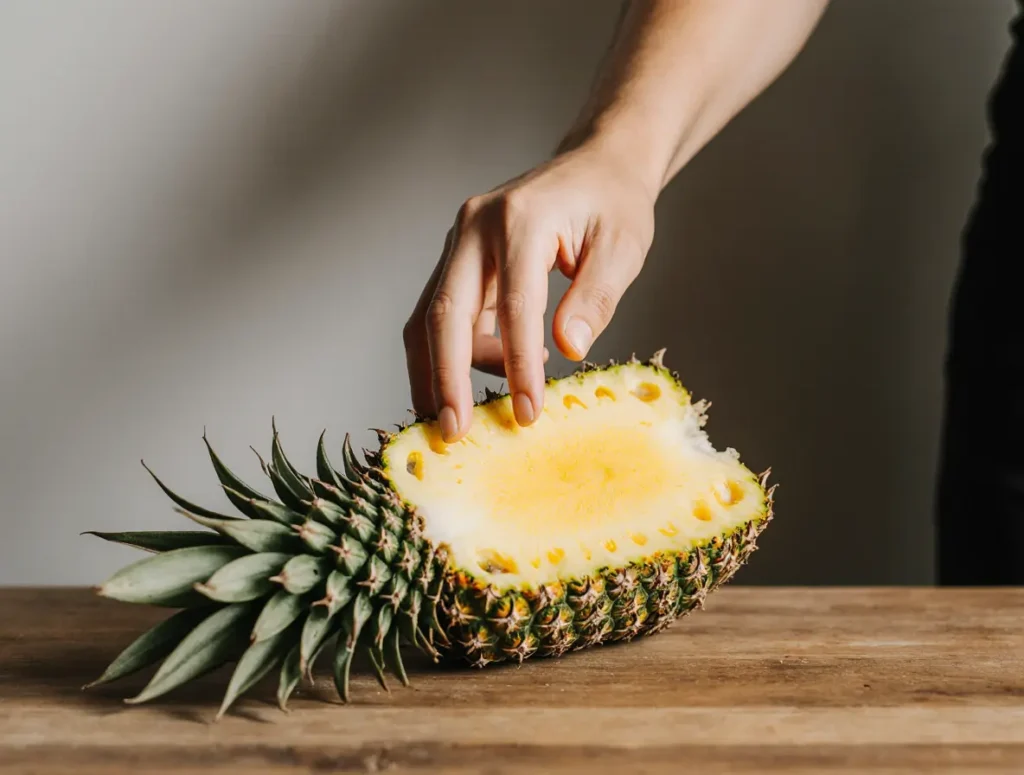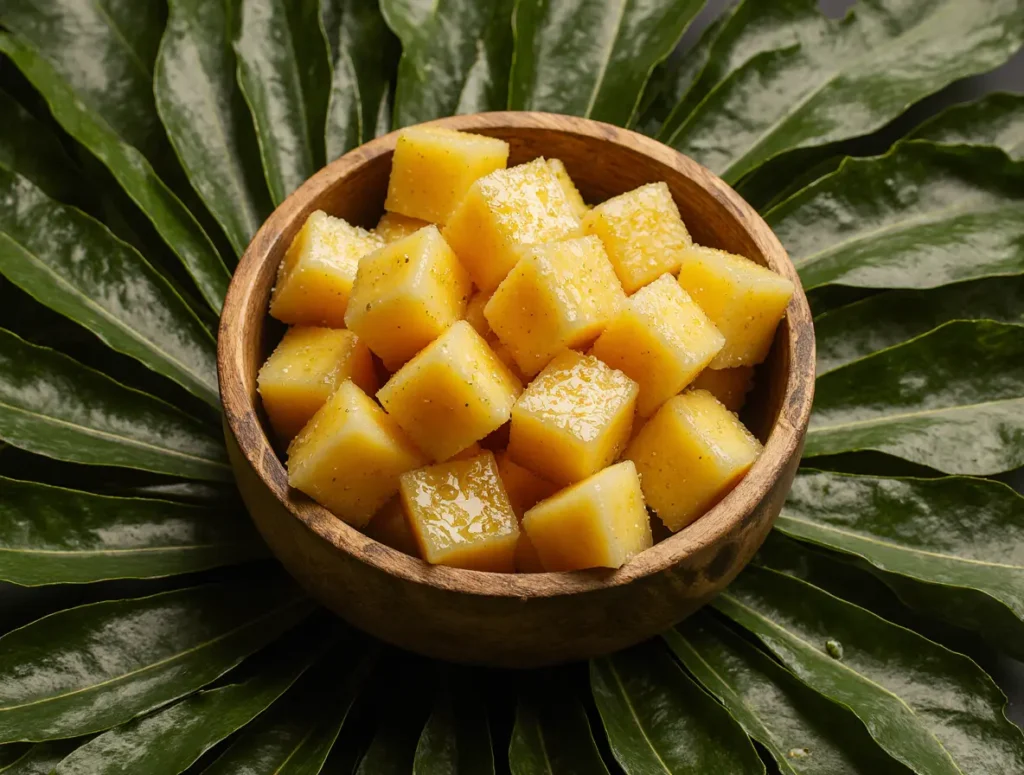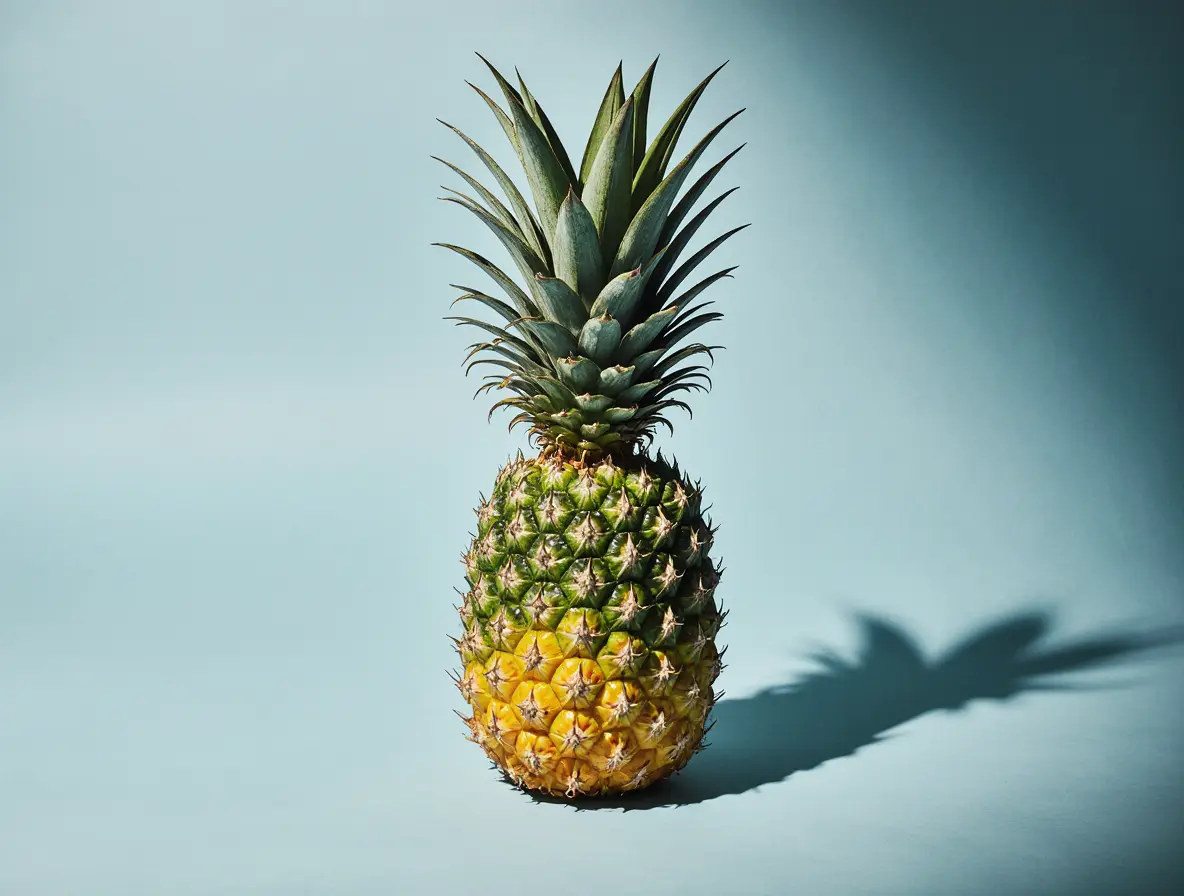Why It Matters: The Sweet Taste of Perfect Timing
Ever bitten into a pineapple and thought, “Yikes, that’s sour!”? You’re not alone. Knowing how to tell if a pineapple is ripe can mean the difference between a mouthwatering tropical treat and a puckered face of disappointment. Pineapples don’t continue to ripen much after being picked, so getting it right at the store is crucial. Whether you’re adding slices to a smoothie, grilling wedges for a summer BBQ, or just snacking straight from the fruit bowl, choosing a ripe pineapple sets the tone for your whole culinary experience.
Let’s dive into everything you need to know so you’ll never have to guess again. By the end of this guide, you’ll feel like a pineapple pro—ready to shop smart and savor the sweet.
Table of Contents
The Look Test: Visual Clues to Ripe Perfection
You can tell a lot about a pineapple just by looking at it—kind of like how you can often sense someone’s mood by their facial expression. When shopping, start with the skin color.
- Golden Hue: A ripe pineapple usually has a warm golden yellow color starting at the base. The more golden the fruit (without turning brown), the riper it likely is. Green isn’t always bad, but too much green can signal immaturity.
- Shape and Size: Look for pineapples that are plump and evenly shaped. An oddly-shaped fruit might not have matured evenly.
- No White Spots or Mold: Check around the base. White patches or signs of mold mean it’s past its prime.
Imagine choosing a pineapple like choosing a sunset photo—you’re looking for the perfect balance of color and glow. If it looks like it’s been kissed by the sun, that’s usually a good sign.
The Smell Test: The Nose Knows Best
Here’s where your nose becomes your superpower. A ripe pineapple should have a sweet, fragrant aroma coming from its base.
- Sweet and Fruity Scent: It should smell like what you expect it to taste like—deliciously tropical. No scent? It might not be ripe yet.
- Too Fermented or Sour? If the smell is overly sweet, almost like alcohol or vinegar, it’s overripe.
Think of it like perfume. A pleasant waft is perfect. But if it makes you want to step back, it’s too strong or spoiled.
The Touch Test: Feel for the Sweet Spot
Touch can tell you a lot—just like when testing an avocado or peach.

- Firm but Slightly Soft: Gently squeeze the pineapple. It should give slightly but not feel mushy. Rock-hard? Not ripe. Squishy? It’s past its best.
- Weight Test: Pick it up—does it feel heavy for its size? A heavier pineapple usually means more juice, and more juice means more sweetness.
Try holding two pineapples that are the same size. If one feels like it’s holding a mini ocean inside, that’s your winner.
The Leaf Trick: Tug for Truth
This tip is legendary among pineapple lovers. Some swear by it, others are skeptical. Here’s how it works:
- Tug the Center Leaf: Gently pull one of the inner leaves at the top. If it slides out easily, it’s likely ripe.
- Still Stuck? If it resists, the pineapple may need more time. If it comes out with no effort, check for signs of overripeness.
This trick is like testing spaghetti by throwing it at the wall—simple, oddly satisfying, and surprisingly accurate!
Sound Clues: The Knock Test
This method isn’t as well-known but still worth a try.
- Give it a Tap: Hold the pineapple and give it a gentle knock. A ripe one might sound slightly hollow, indicating juicy flesh inside.
- Compare Taps: Try knocking on several pineapples to get a sense of how the sound varies. The hollow ones often turn out to be juicier.
Think of it like tapping a watermelon or a loaf of bread—you’re listening for that sweet spot of texture and density.
What About Canned Pineapple or Pre-Cut?
Maybe you’re not into the whole choose-and-slice adventure. That’s okay! If you’re buying canned or pre-cut pineapple:

- Check the Liquid: For canned, go for “100% pineapple juice” over syrup for a more natural flavor.
- Look at the Color: Even pre-cut pieces should look vibrant yellow, not pale or translucent.
- Use-By Dates Matter: Don’t ignore them. Pineapple loses flavor and texture quickly once cut.
It’s kind of like buying a ready-made cake. It’s convenient, but you still want the freshest one on the shelf.
What Happens If You Eat an Unripe Pineapple?
So you picked one that wasn’t quite ready—now what?
- Tart Taste: Unripe pineapple is sour and can even make your mouth feel sore.
- Digestive Discomfort: It contains higher levels of bromelain, which can cause irritation if eaten in excess.
- Not Unsafe, But Not Pleasant: It’s not poisonous, but it’s not the treat you were hoping for either.
It’s like biting into a green banana—technically edible, but your taste buds will protest.
Can You Ripen Pineapple at Home?
Unlike bananas or avocados, pineapples don’t ripen much after harvest. But you can try these hacks to nudge it along a bit:
- Upside Down Storage: Place the pineapple upside down (on its leafy crown). This helps redistribute the sugars.
- Paper Bag Method: Store it in a brown paper bag with a ripe banana or apple to speed up softening, though not sweetness.
- Room Temperature: Don’t refrigerate it until it’s fully ripe. The cold slows everything down.
Think of it like trying to make instant oatmeal taste homemade—it’ll get better, but not perfect.
Expert Opinions: What Do the Pros Say?
We asked Chef Alana Moore, a tropical fruit specialist and head chef at Pine & Palm Bistro:
“You can’t beat the smell test. I always tell my staff—if it smells like a vacation, it’s probably ripe.”
And according to the Hawaiian Pineapple Growers Association, ripeness is 90% visual and olfactory:
“Look for the golden base, smell for sweetness, and don’t rely too much on leaf-pulling alone.”
So when in doubt, trust your senses. Nature gives you clues—you just need to pay attention.
Conclusion: Your Sweet Guide to Picking the Best Pineapple
Choosing a ripe pineapple doesn’t need to be a gamble. With a little know-how and your five senses in action, you’ll pick the perfect fruit every time. From spotting the golden hue to catching that tropical scent and giving a gentle squeeze, it’s all about tuning in.
And remember—if you ever feel unsure, let your nose be your guide. Pineapples should make you feel like you’re stepping onto a beach in Hawaii, even if you’re just in your local grocery store.
Here’s to juicier, sweeter, and smarter pineapple picks!
FAQs
1. How can I store a pineapple once it’s ripe?
Store a ripe pineapple in the fridge to slow down spoilage. If it’s been cut, keep the pieces in an airtight container for up to five days.
2. Can I freeze pineapple?
Absolutely! Cut it into chunks, spread on a baking sheet to freeze individually, then transfer to a freezer bag. Great for smoothies!
3. Why does pineapple make my mouth tingle?
Pineapple contains bromelain, an enzyme that can break down proteins—like those in your mouth. It’s harmless but can feel weird.
4. What’s the difference between a ripe and an overripe pineapple?
A ripe pineapple smells sweet, has golden skin, and is juicy. An overripe one may smell fermented and feel mushy.
5. Is it okay to eat the pineapple core?
Yes, but it’s firmer and less sweet. Many people juice it or use it in cooking rather than eating it raw.

